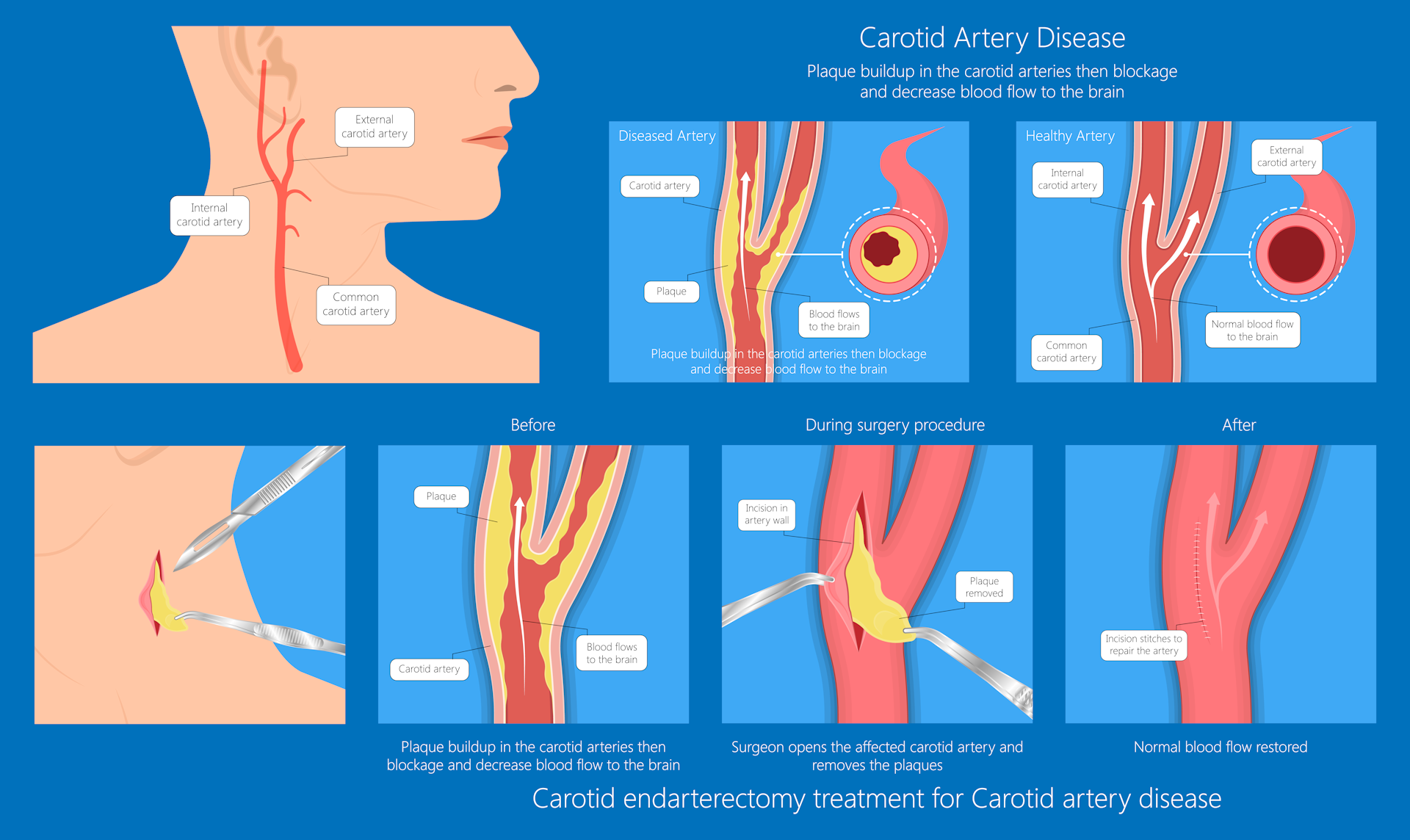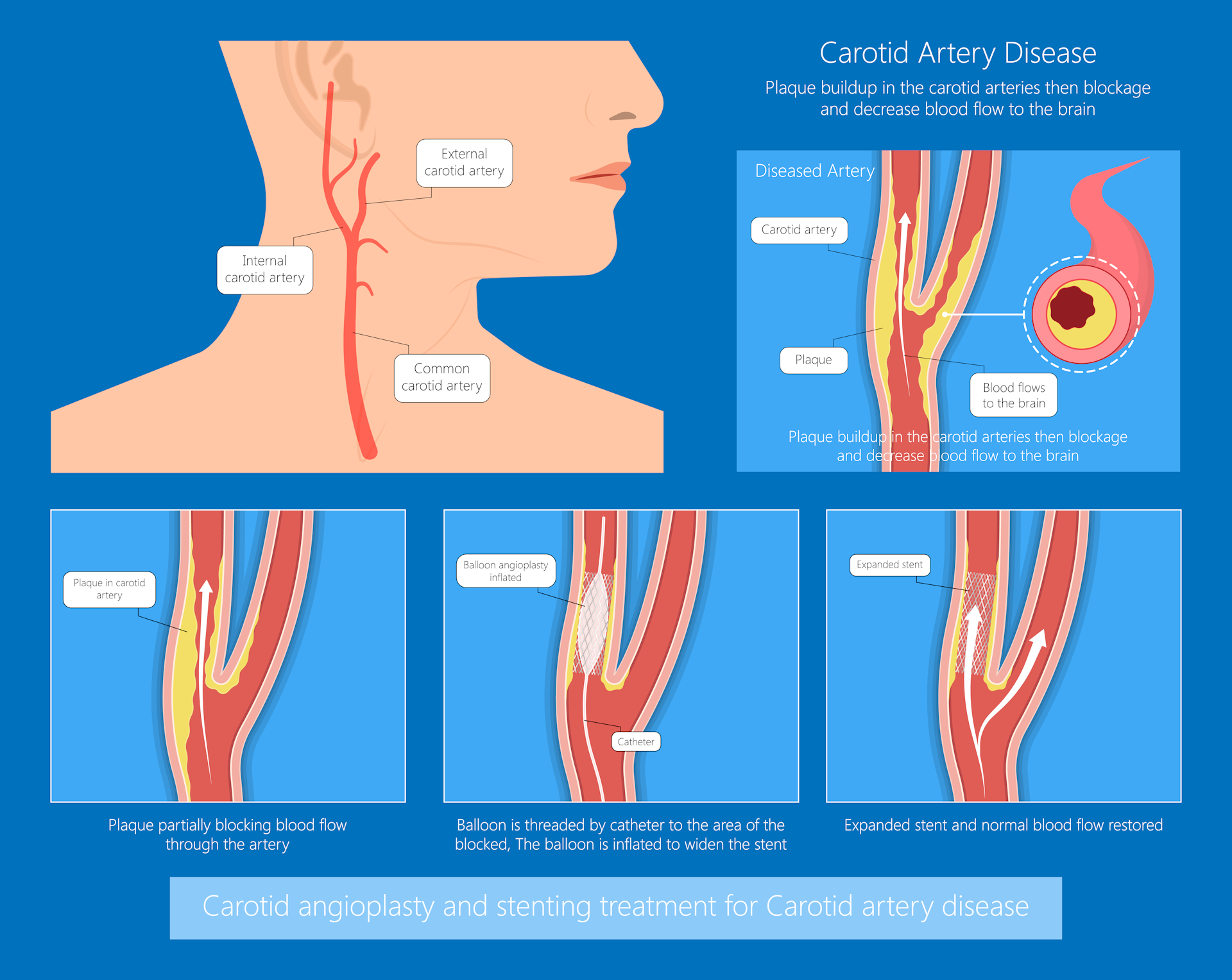A stroke results from damage to the brain usually due to a blockage in a blood vessel supplying the brain or bleeding on the brain. It can affect people in many different ways, the most common being weakness down one side of the body or difficulty speaking or seeing. A TIA (transient ischaemic attack) is when these symptoms occur for a short period and then disappear completely. The significance of a TIA is that it can be a warning sign that a major stroke may be about to occur.
A common cause of stroke and TIA is from a narrowing in the carotid artery. Carotid arteries are on either side of the neck and supply most of the blood to the brain. There are also two smaller arteries on the back of the neck, the vertebral arteries, that also supply the brain.
Atherosclerosis, or plaque can build up in the arteries, which in causes decreased blood supply to the brain. They can also throw off small clots to the brain. Atherosclerosis, also known as hardening of the blood vessels, is caused by smoking, high blood pressure, high cholesterol, diabetes, family history, and age.
To check whether there is a significant narrowing in the carotid arteries, a scan is required. This is performed with Ultrasound (Duplex), CT, or MRI scan. Each modality has its strengths and weaknesses.
All patients who have had a stroke or TIA should be on a blood thinner, cholesterol lowering agent (statin) and blood pressure medications if required. If you smoke, then stopping smoking is the most significant action to reduce further strokes.
If you have a narrowing greater than 70%, then further intervention should be considered. There are many factors that go into deciding whether intervention is appropriate, in terms of risks and benefits. Dr Giri Mahadevan will be able to counsel you on the best management for you.
Carotid Endarterectomy
Carotid Endarterectomy is the preferred intervention for patients that have had a stroke or TIA and have more than 70% narrowing of the carotid artery. It is performed under anaesthetic. A cut is made in the neck and the narrowing removed. During the repair, a shunt is used to provide blood to the brain and patch (fabric or biological) is used to repair the artery. The operation is very technical and carries a risk of up to 5% of stroke and death. Most patients spend only one to two days in hospital and short recovery at home.

Carotid Artery Stenting
Carotid stenting is another technique to treat a narrowed carotid artery. It involves a small hole in the groin artery and placing a stent inside the narrowed carotid artery. Special devices are used to protect the brain from any clots travelling up. The procedure is done under local anaesthetic and patient can go home the following day. Surgery is still preferred over stenting currently as stenting has a higher associated stroke rate.
